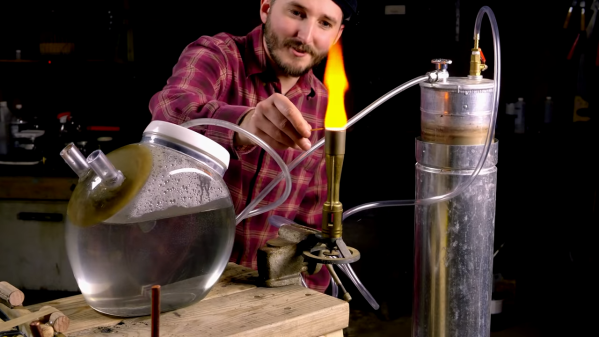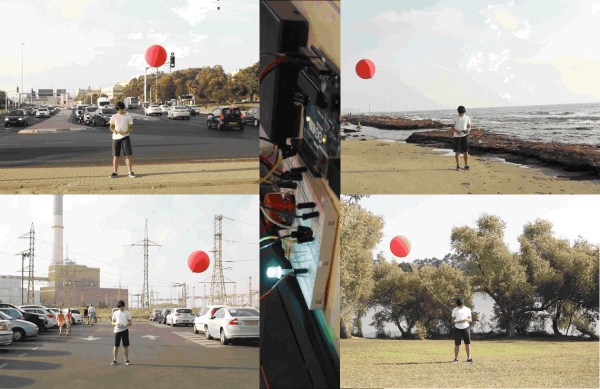Water, high currents, blinding balls of plasma, and a highly flammable gas that’s toxic enough to kill you in three minutes if you breathe enough of it. What’s not to love about this plasma-powered water gas generator?
In all seriousness, [NightHawkInLight] is playing with some dangerous stuff here, and he’s quite adamant about this one being firmly in the “Don’t try this at home” category. But it’s also fascinating stuff, since it uses nothing but a tank of water and an electric arc to produce useful amounts of fuel very quickly. It’s easy to jump to the conclusion that he’s talking about the electrolytic splitting of water into the hydrogen-oxygen mix HHO, but this is something else entirely.
Using a carbon electrode torch connected to his arc welder, a setup that’s similar to the one he used to make synthetic rubies, [NightHawkInLight] is able to strike an underwater arc inside a vessel that looks for all the world like a double-barreled bong. The plasma creates a mixture of carbon monoxide and hydrogen which accumulates very rapidly in the gasometer he built to collect the flammable products produced by a wood gasifier.
The water gas burns remarkably cleanly, but probably has limited practical uses. Unless you live somewhere where electricity costs practically nothing, it’ll be hard to break even on this. Still, it’s an interesting look at what’s possible when plasma and water mix.















